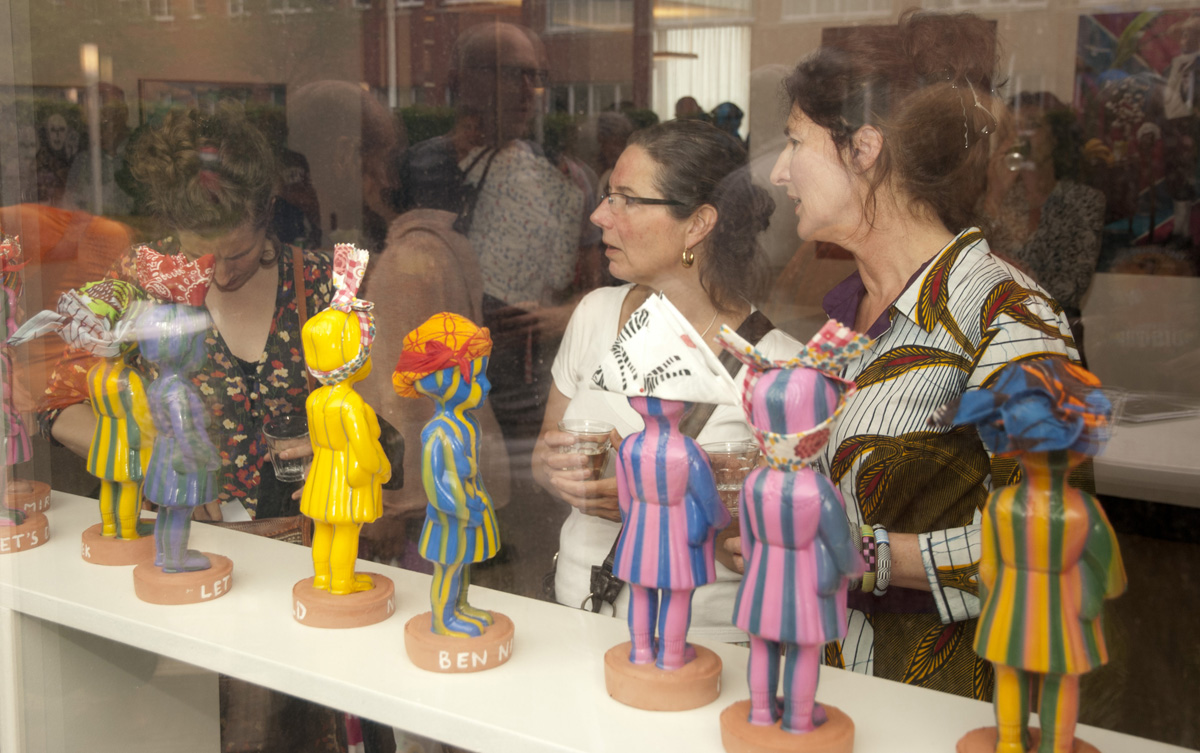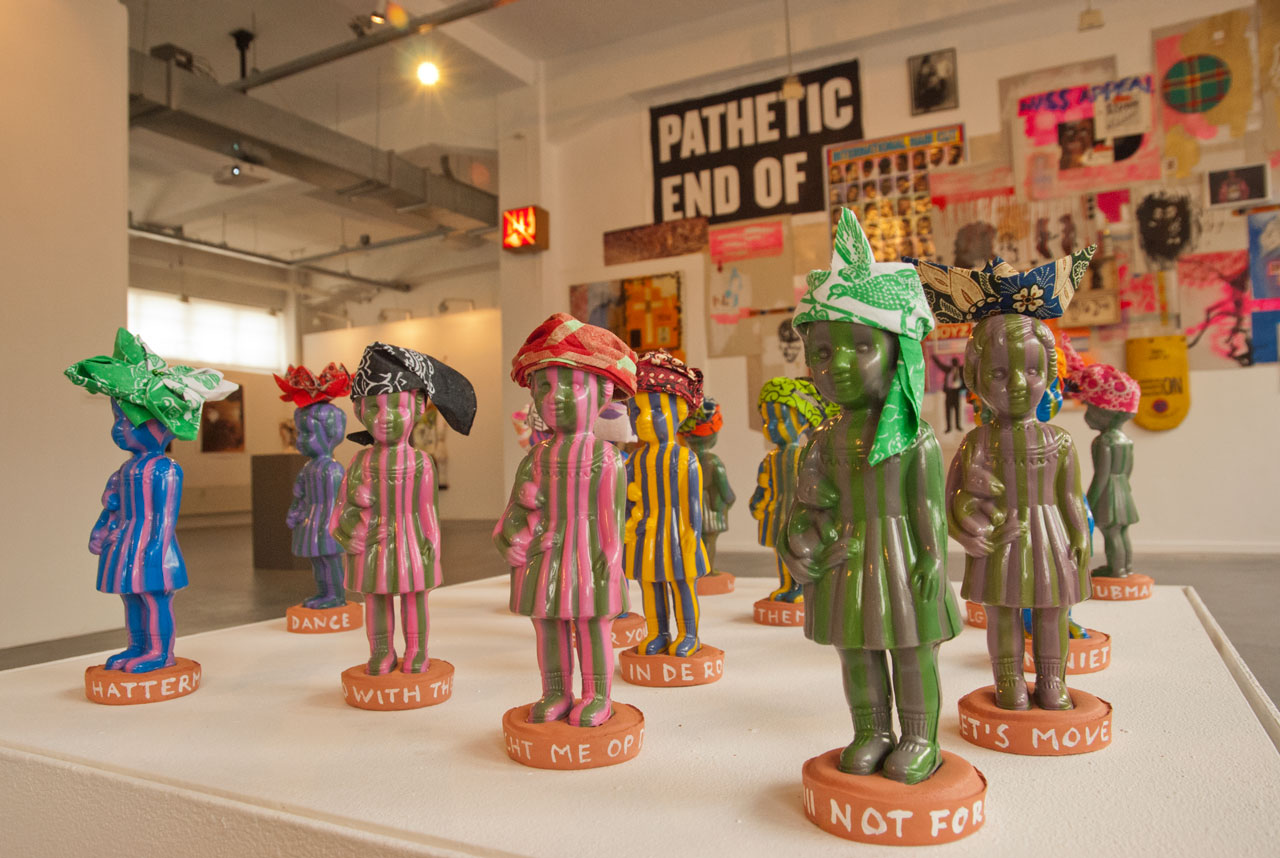Talking Hats
Renée Koldewijn | Talking Hats | installation | CBK Amsterdam-Zuidoost, Oba Amsterdam, Kunstlab Deventer | 2013
Text Renée Koldewijn | blog Amsterdam Museum | 2013
Ieder ‘standbeeldje’ staat voor een bekende of onbekende vrouw uit de slavernijgeschiedenis. Vrouwen die zichzelf bevrijd hebben door het oerwoud in te vluchten zoals Nora bijvoorbeeld, de moeder van Marron-leider Boni die in vrijheid geboren is in het binnenland van Suriname. Of vrouwen die anderen hebben geholpen vrij te worden (Harriet Tubman in de VS). En later vrouwen die via hun kunst hebben gestreden voor gelijke rechten (Miriam Makeba) of voor meer bewustwording met betrekking tot de slavernijgeschienis (Noni Lichtveld, Nola Hatterman).
‘Resistance was not only a male thing; women often chose strategies that did not look like acts of resistance, shows Renée Koldewijn’s installation Talking Hats. It consists of dozens of statues of females with colorful scarfs, angisa’s’. Jan Pieter Ekker, Parool, 01-07-2013
‘Research proved that males often chose for more violent resistance like rebellion and war. Women were too vulnerable and would endanger their loved ones on the plantations. They chose for wearing scarfs to send messages to each other. Renée Koldewijn calls her installation with rightfully Talking Hats. Interestingly angisa’s were folded around the head, they contained secret messages that the planters couldn’t understand. “Wait for me at the corner”, or “Let them talk” are classical folding methods, up to now’. Shared Heritage, The Slavery Past in Art, Aspha Bijnaar, 2013



